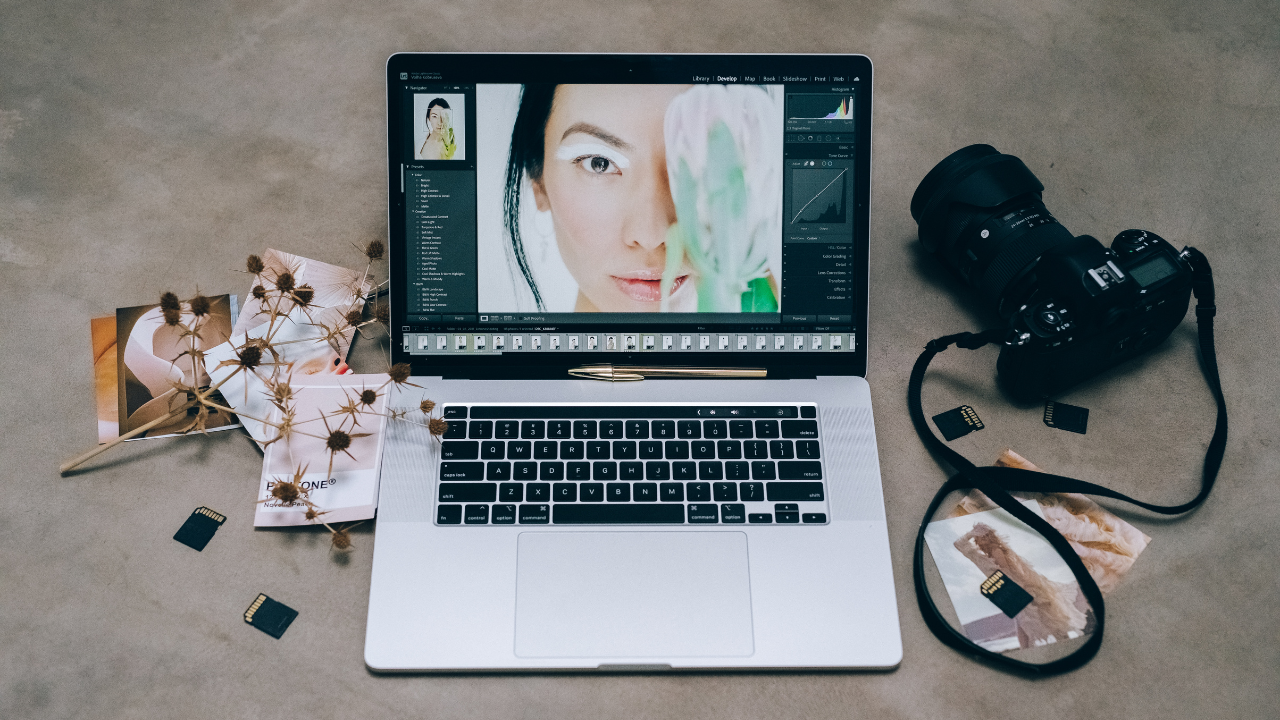Graphic designers often need high-quality images for their projects, whether for web design, print materials, or digital art. The right camera can make a significant difference in the quality of these images. When choosing a camera, graphic designers should consider several factors, including image quality, color accuracy, ease of use, and adaptability to different lighting conditions.

Also, Read: Best Cameras For Short Films
High Resolution
A camera with high resolution is essential for graphic designers who need detailed, sharp images. Higher-resolution cameras capture more detail, which is particularly important for large prints or high-resolution digital displays. Look for cameras with a high megapixel count to ensure your images have the clarity needed for professional design work.
Dynamic Range
Dynamic range refers to the camera’s ability to capture both the darkest and lightest parts of an image. A wide dynamic range is crucial for graphic designers because it allows for more flexibility in post-processing. This is especially important when working with images that have a lot of contrast, such as landscapes or architectural photos. Cameras with a wide dynamic range can produce images with rich details in both shadows and highlights.
Color Accuracy
Color accuracy is vital for graphic designers who need their images to look consistent across various mediums. Cameras with good color reproduction ensure that the colors in your photos are true to life. This is particularly important when working on projects that require precise color matching, such as brand logos or marketing materials. Look for cameras with advanced color profiling and customizable settings to achieve the best results.
Low Light Performance
Graphic designers often need to shoot in varying lighting conditions, including low-light environments. A camera with excellent low-light performance can capture clear, noise-free images in dim settings. This is achieved through a combination of a large sensor, wide-aperture lenses, and advanced image processing capabilities. Cameras with high ISO sensitivity and effective noise reduction algorithms are ideal for low-light photography.
Lens Compatibility
The ability to change lenses is a significant advantage for graphic designers. Different lenses offer different perspectives and capabilities, from wide-angle to telephoto, and macro to portrait lenses. A camera with a versatile lens mount system allows designers to use a variety of lenses to suit different creative needs. This flexibility can greatly enhance the range and quality of your photographic work.
Manual Controls
Having full control over camera settings is crucial for graphic designers who want to achieve specific artistic effects. Cameras with comprehensive manual controls allow you to adjust settings such as aperture, shutter speed, ISO, and white balance. This level of control helps in creating images that are tailored to your exact specifications and vision.
Build Quality and Ergonomics
A well-built camera that feels comfortable in your hands can make a big difference during long shooting sessions. Look for cameras with durable construction and weather sealing to withstand different environments. Ergonomics, such as a comfortable grip and intuitive button layout, can make the shooting experience more enjoyable and efficient.
Autofocus Performance
Fast and accurate autofocus is essential for capturing sharp images, especially when photographing moving subjects or working in challenging conditions. Cameras with advanced autofocus systems, including multiple focus points and reliable tracking capabilities, can help ensure your images are crisp and well-focused.
Video Capabilities
While photography is the primary focus, having good video capabilities can be an added advantage for graphic designers who create multimedia content. Look for cameras that offer high-resolution video recording, good frame rates, and advanced video features such as slow motion and time-lapse. This can expand your creative possibilities and provide high-quality content for various projects.
Connectivity and Workflow Integration
Modern cameras often come with built-in Wi-Fi, Bluetooth, or NFC for easy sharing and transferring of images. This can streamline your workflow by allowing you to quickly transfer images to your computer or mobile device for editing. Some cameras also offer integration with cloud services or mobile apps, providing even more flexibility and convenience.
Canon EOS 4000D
No products found.
Summary
Selecting the best camera for graphic design involves considering various factors that affect image quality, ease of use, and creative potential. High resolution, dynamic range, color accuracy, low light performance, lens compatibility, manual controls, build quality, autofocus performance, video capabilities, and connectivity are all important features to look for. By prioritizing these aspects, graphic designers can choose a camera that meets their specific needs and enhances their creative projects.